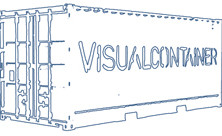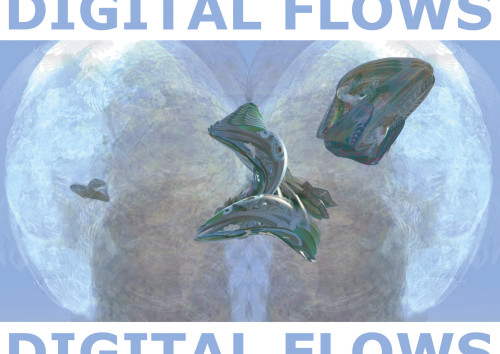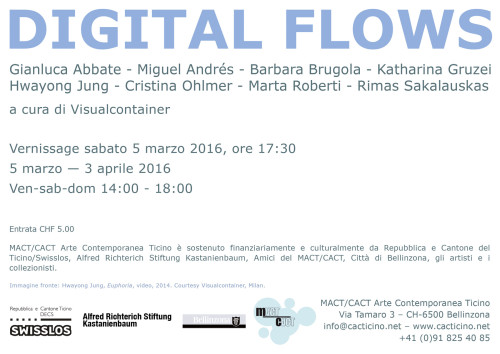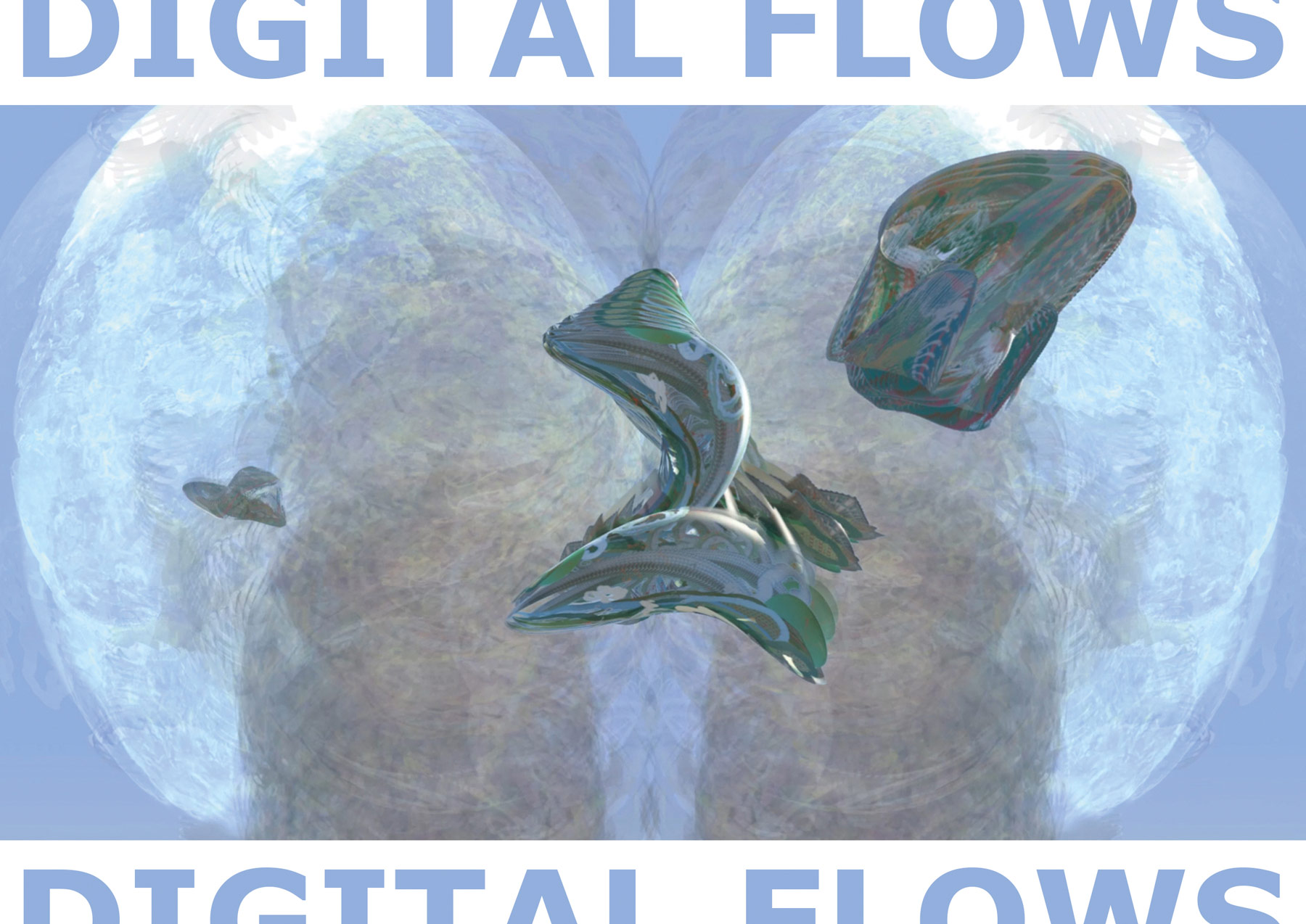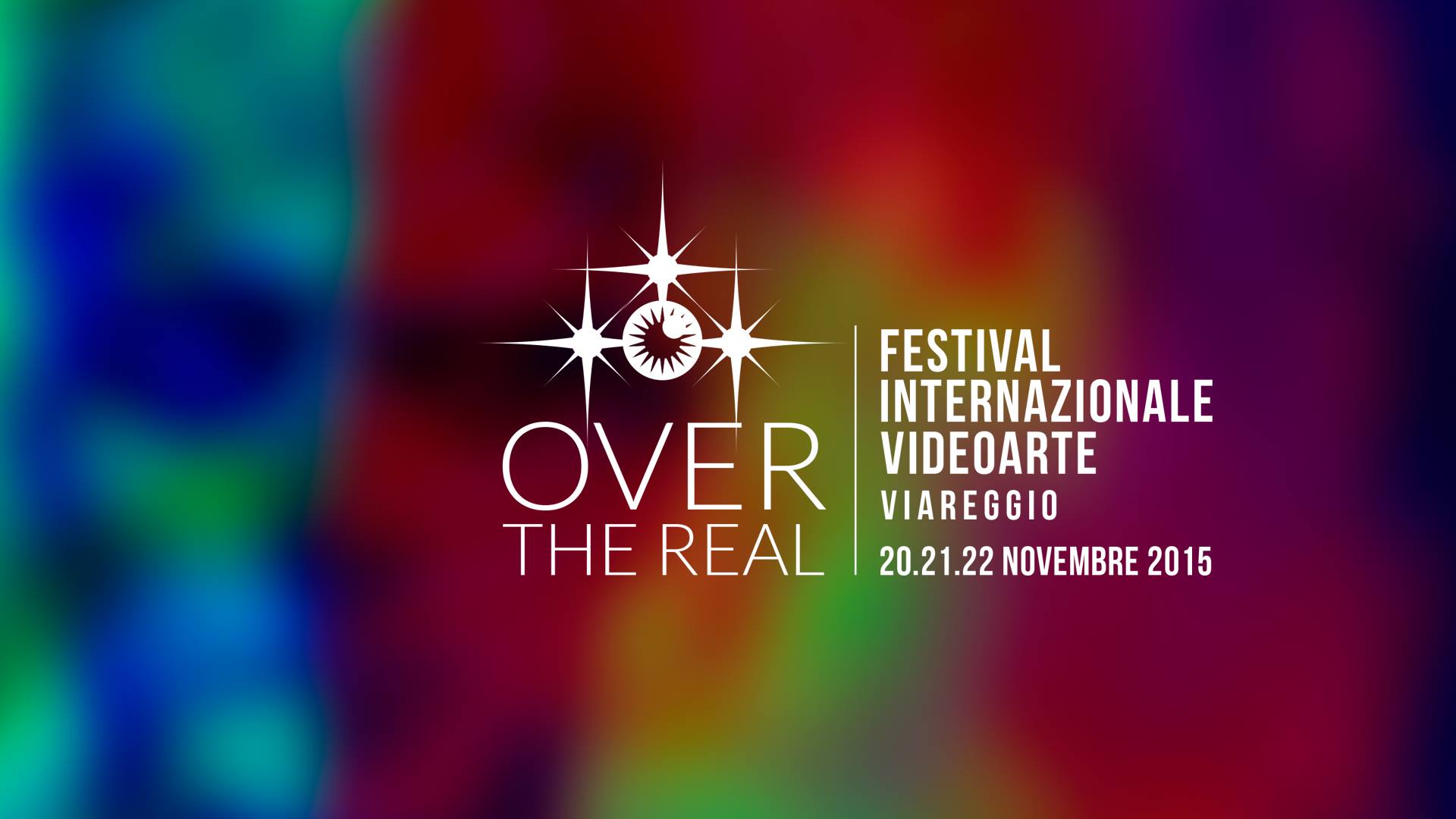DIGITAL FLOWS
Curated by Visualcontainer, Milan.
MACT/CACT
Arte Contemporanea Ticino
Via Tamaro 3 – 6500 Bellinzona
Switzerland
Opening on Saturday 5 March 2016 at 5.30 p.m.
5 March – 3 April 2016
Fri-Sat-Sun from 2.00 to 6.00 p.m.
Artists: Gianluca Abbate, Miguel Andrés, Barbara Brugola, Katharina Gruzei, Hwayong Jung, Cristina Ohlmer, Marta Roberti, Rimas Sakalauskas
DIGITAL FLOWS is the exhibition that opens the 2016 season. Curated by Visualcontainer Milano, the exhibition also pays tribute to the tireless labour of love conducted by this video archive, which – by virtue of the quality of its commitment and in parallel with the off space [.Box] – penetrates into the sometimes sterile recesses of the more accredited museum institutions. Established in 2008 in the heart of Milan, Visualcontainer has become something of a showcase, primarily for archiving and presenting the idiom of the artist video, a language that is still very liquid and in the throes of vigorous evolution. Its directors’ international approach and global vision have raised its status to that of a privileged location, something along the lines of a German-style Archiv und Kunsthalle of the language of video, set down in the very heart of Italy’s business capital and crystallised more by virtue of its contents than because of any kind of institutional approach.
The video medium has undergone many of what might be termed transitory changes since the seventies, progressing from the yoke of the performing arts to a cross-fertilisation with the then-powerful cathode ray tube TV, when the force of advertising ploughed many a powerful furrow across the market of imagery, a parasite that sucked so much of the lifeblood from video art and artistic language as to surpass them in many cases and induce authors to correct and readjust their – often cannibalistic – aim at the means of production itself.
Video, like photography, is the most immediate documentary mirror of the reality around us that shatters us into the trans-identity of globalism.
Since the days when video was essentially experimentation and an antithesis response to the visual experience traceable to painting (we are in the late sixties), in today’s world, where “we’ve already tried everything”, novelty comes paradoxically from the resurgence of digital, which imbues our entire existence with a fixation with socio-global communication that nobody ever necessarily asked for, but that nevertheless induces a new aesthetic model.
DIGITAL FLOWS sets out to outline and highlight this latest phase of video production. This is how the curators, Alessandra Arnò and Paolo Simoni, describe the exhibition and the curatorial choices they have made.
[…] “The image, in its digital transcendence, is now immaterial: it is a bit, a beam of light: it lives among the clouds and passes rapidly through the web of data. So what does that leave us of its ‘inconsistency’ and what is that attracts us towards the video image’s non-materiality: could it be its evocative or illusory potential?”
DIGITAL FLOWS is a visual flow that induces the observer to experiment with different levels of awareness of sight, moving along a progressive installation that starts from the peak of visual fascination with numerical data, passes through our sense of disorientation between everyday reality and digital panoramas and ends up illustrating the observer’s own condition by simulating a self-representation.
The first piece on show is Miguel Andrés’ SYSTEM, which represents a sort of mirror where observers can draw comparisons between themselves and a hypothetical machine-man of the future, where the experience of the senses is replaced by a precompiled technological equivalent.
Synthetic beauty is represented by the self-generating forms of perfect landscapes in the work EUPHORIA by Hwayong Jung. The elegance of the fractal formulae that simulate the concept of self-similarity found in the real world becomes something of a trap for the eye, leading to the peak of visual fascination and full immersion in these digital scenarios.
As a result, the exhibition room becomes a place that seems to be tasked with the ‘apparition’ and the ‘manifestation’ of the numerical algorithm that manipulates real data by providing a constant random simulation of perfect non-material forms.
The observer’s eye is deceived once again by the reassuring representation of everyday ordinariness in the work of Rimas Sakalauskas. SYNCHRONIZATION reveals structures that unexpectedly shy away from their usual urban location. As the real scenario changes shape, bit by bit, the cityscape’s reassuring stability comes to life, changes connotation and is transformed into a launchpad pointing towards the unknown. The real object returns to the ‘virtual’ world of ideas with an inverse motion.
A perfect representation of the contemporary world is proposed as a continuous flux of situations and scenarios in Gianluca Abbate’s work PANORAMA. Digital reworking restores all the contemporary melting pot’s intrinsic chaos, laying down layer upon layer and limitless landscapes in a single irrepressible flow of images of the global world.
While the audiovisual works experienced up to this point all play with the concept of disorientation, the next one, LAPSE OF VIEW, for which Barbara Brugola drew her inspiration from Caspar David Friedrich’s celebrated Wanderer Above a Sea of Fog, provides a moment of reflection about visuals, a return to ‘true’ vision, exactly like the character who stands waiting in quiet observation of the horizon, his gaze surveying the whiteness. The moment is a very private one, when the observer comes face to face with reality and the suspension of his gaze.
It brings us back with a jolt to reality, to vision and to the history of the visual arts.
Inspired by the works of the Lumière brothers, WORKERS LEAVING THE FACTORY (AGAIN) by Katharina Gruzei is something like a contemporary take on the painting of the Fourth Estate, where individuality becomes a collective body. The workers in the title could be men, automatons or slaves: in any case, they are participants in global industry. Like the workers illustrated by the Lumière brothers, they are actors in the industry of imagery.
This makes the work into a further mirror for ‘reflecting’, both sociologically and digitally, on contemporary conditions.
The exhibition experience also extends to screens and devices, which unexpectedly convert from objects we use every day to become places where works of art appear, re-attuning the eye to exercising its sight, as in Cristina Ohlmer’s piece PIXEL MOTION. The little coloured squares in an exercise book transform into the unit of digital measurement, the pixel. In ten exercises of style, the pristine cloak of the black forest becomes the pretext for recontextualising the role played by pixels and digital representation in natural analogical space.
Marta Roberti’s work SCARABOCCHIO similarly revives a classical animation on the screen of an everyday device, which for the occasion becomes a pocket digital memento for this human-insect hybrid, in an attempt to restore its own equilibrium.
The exhibition comes full circle and then reopens with mirror works, where visitors can ‘reflect’ on their existential condition before letting themselves go with visual pleasures. So DIGITAL FLOWS plays on visual fascination, on the suspension of disbelief and on digitally reworking real data, opening up multiple levels of interpretation both of how we use and relate to technology and of its evocative, illusory power.
Alessandra Arnò, 2015 […]
Mario Casanova, 2016
Translation Pete Kecher
The CACT centre of contemporary Art in Canton Ticino was founded in 1994, whose target is to organize international contemporary art exhibitions and launch thematic publications. Since 1996 membership cards for friends and donators offer combined subscriptions to international art magazines and intercantonal cultural Institutions, it’s target is to inform our public about other cultural realities spread all over the national territory. In 2009, the MACT Museo d’Arte Contemporanea Ticino was born, in order to work on new ways of presenting artworks out of private art collections.
MACT/CACT Suisse enjoys the financial and cultural support of Republic and Canton of Ticino/Swisslos, City of Bellinzona, Alfred Richterich Stiftung Kastanienbaum, Friends of MACT/CACT, the Artists.
MACT/CACT
Arte Contemporanea Ticino
Director Mario Casanova
Coordinator Pier Giorgio De Pinto
DIGITAL FLOWS
A cura di Visualcontainer, Milano.
MACT/CACT
Arte Contemporanea Ticino
Via Tamaro 3, 6500 Bellinzona
Switzerland
Vernissage Sabato 5 marzo 2016 dalle 17:30
5 marzo – 3 aprile 2016
Ve-sa-do dalle 14:00 alle 18:00
Artisti: Gianluca Abbate, Miguel Andrés, Barbara Brugola, Katharina Gruzei, Hwayong Jung, Cristina Ohlmer, Marta Roberti, Rimas Sakalauskas
DIGITAL FLOWS è la mostra che apre la stagione 2016. A cura di Visualcontainer Milano, l’esposizione rappresenta anche un omaggio all’instancabile lavoro di questo archivio video, che – per qualità dell’impegno e parallelamente allo spazio off [.Box] – si insinua nelle pieghe talvolta sterili delle istituzioni museali più accreditate. Nato nel 2008 nel cuore di Milano, Visualcontainer è diventato una sorta di showcase fondamentale per l’archiviazione e presentazione di un linguaggio ancora molto liquido e ancora fortemente in evoluzione quale il video d’artista. L’approccio internazionale e la visione globale dei suoi responsabili lo hanno alzato a luogo privilegiato, quasi una sorta di Archiv und Kunsthalle del linguaggio video nel centro della capitale economica d’Italia, solidificatisi più per i loro contenuti, che per un approccio di tipo, appunto, istituzionale.
Dagli anni 1970, il mezzo video ha subito innumerevoli cambiamenti, per così dire, di transito, passando dall’ipoteca visual-performativa all’ibridazione con l’allora prepotenza del mezzo televisivo-catodico, laddove l’universo pubblicitario entrava a forza nel mercato dell’immagine, parassitando l’arte video e il linguaggio artistico a tal punto da superarlo in molti casi e inducendo gli autori a riformulare giustamente l’approccio, spesso cannibalistico, al mezzo di produzione stesso.
Come la fotografia, anche il video è lo specchio documentativo più immediato del reale che ci circonda e che ci frammenta nella trans-identità del globale.
Dall’epoca, nella quale il video rappresentava la sperimentazione e una risposta antitetica all’esperienza visuale di radice pittorica (fine degli anni 1960), nell’epoca odierna del ‘già tutto sperimentato’ il nuovo è dato proprio e paradossalmente dalla recrudescenza del digitale, che intride la nostra esistenza di un comunicazionismo socio-global non per forza richiesto, ma che induce altresì a un nuovo modello estetico.
DIGITAL FLOWS (Flussi Digitali) intende proprio delineare e mettere in luce quest’ultima fase della produzione video.
Così si esprimono i curatori di Visualcontainer, Alessandra Arnò e Paolo Simoni, sulla mostra e sulle loro scelte curatoriali.
[…] “L’immagine nella sua trascendenza digitale ora è immateriale, è un bit, un fascio di luce, risiede tra le nuvole, passa veloce attraverso la rete dei dati.
Cosa ci resta quindi della sua “inconsistenza” e cosa ci attrae verso l’immaterialità dell’immagine video, che sia forse il suo potere evocativo e illusorio?”
DIGITAL FLOWS è un flusso visivo che porta lo spettatore a sperimentare diversi livelli di consapevolezza alla visione attraverso un percorso installativo che parte dall’apice della fascinazione visiva del dato numerico, passando allo spaesamento tra reale quotidiano e panorami digitali, fino al palesarsi della condizione dello spettatore stesso attraverso la simulazione della propria rappresentazione.
La prima opera in mostra di Miguel Andrés, SYSTEM, rappresenta infatti una sorta di specchio, dove è possibile confrontarsi con un ipotetico uomo – macchina futuro, dove l’esperienza sensibile viene sostituita da quella tecnologica precompilata.
La bellezza sintetica è rappresentata attraverso le forme autogenerative dei paesaggi perfetti dell’opera EUPHORIA di Hwayong Jung. L’eleganza delle formule frattali che simulano il concetto di auto-similarità presente nel mondo reale, diventa una sorta di trappola per lo sguardo, che porta all’apice della fascinazione visiva e all’immersione totale in questi scenari digitali.
La sala espositiva diventa quindi luogo deputato “all’apparizione” e “manifestazione” dell’algoritmo numerico che manipola il dato reale attraverso una continua simulazione casuale di forme immateriali perfette.
L’occhio viene nuovamente ingannato dalla rassicurante rappresentazione della quotidianità nell’opera di Rimas Sakalauskas. SYNCRONIZATION svela strutture che inaspettatamente ri-fuggono dalla solita collocazione urbana. Lo scenario reale poco a poco cambia forma e la rassicurante stabilità del paesaggio urbano si anima, cambia connotazione e si trasforma in una rampa di lancio verso l’ignoto. L’oggetto reale torna al mondo “virtuale” delle idee con un moto inverso.
La perfetta rappresentazione del mondo contemporaneo viene editata come un continuo fluire di situazioni e scenari nell’opera PANORAMA di Gianluca Abbate. La rielaborazione digitale restituisce il melting pot contemporaneo in tutta la sua caoticità, stratificando livelli e paesaggi senza alcun confine in un unico flusso irrefrenabile di immagini del mondo globale.
Se le precedenti opere audiovisive giocano sullo spaesamento, LAPSE OF VIEW di Barbara Brugola ispirata all’opera ‘Viandante sul mare di nebbia’ di Caspar David Friedrich, fornisce un momento di riflessione sul visivo, un ritorno alla “vera” visione, esattamente come la protagonista dell’opera che osserva l’orizzonte, in silenzio, in attesa ed immersa nel bianco. Questo è un momento intimo di confronto con la realtà e con la sospensione dello sguardo.
Si ritorna fortemente al reale, alla visione e alla storia dell’arte visiva.
Ispirato alla pellicola dei Fratelli Lumiere, WORKERS LEAVING THE FACTORY (AGAIN) di Katharina Gruzei, mostra degli operai che escono dalla fabbrica. Una sorta di quarto stato contemporaneo dove l’individualità diventa corpo collettivo. Gli operai potrebbero essere uomini, automi, schiavi, ad ogni modo sono attori nell’industria globale, come gli operai rappresentati dai Lumière sono attori dell’industria dell’immagine.
L’opera è quindi un ulteriore specchio di “riflessione” sulla condizione contemporanea sia in ambito sociologico che digitale.
Il percorso espositivo si estende inoltre su schermi e device, che inaspettatamente diventano da oggetto di uso quotidiano a luogo di apparizione di opere che riabituano l’occhio all’esercizio della visione come l’opera PIXEL MOTION di Cristina Ohlmer. Il quadretti colorati di un quaderno diventano l’unita di misura digitale, il pixel. Attraverso dieci esercizi di stile, il candido manto della foresta nera diventa pretesto per ricontestualizzare il ruolo del pixel e del digitale nello spazio analogico naturale.
Allo stesso modo, SCARABOCCHIO, opera di Marta Roberti, ripropone un’animazione classica sullo schermo di un dispositivo di uso quotidiano, che in questa occasione diventa memento digitale tascabile per questo ibrido umano-insetto, che tenta di ristabilire il proprio equilibrio.
Il cerchio espositivo si chiude e si riapre con opere-specchio, dove è possibile “riflettere” sulla condizione esistenziale, per poi abbandonarsi ai piaceri visivi. DIGITAL FLOWS gioca quindi sulla fascinazione visiva, sulla sospensione dell’incredulità e la rielaborazione del dato reale in chiave digitale, aprendo molteplici livelli di lettura sia sull’uso della tecnologia e il nostro rapporto con essa, che sul potere evocativo e illusorio.
Alessandra Arnò, 2015 […]
Mario Casanova, 2016
Il CACT centro d’arte contemporanea ticino è stato fondato nel 1994 con lo scopo di organizzare esposizioni d’arte contemporanea internazionale, nonché realizzare pubblicazioni tematiche. L’istituzione, nel 1996, di un tesseramento combinato con riviste d’arte specializzate ha incentivato le collaborazioni tra spazi d’arte e musei, così come la diffusione della produzione artistica delle nuove generazioni. Nel 2009 è stato creato il MACT museo d’arte contemporanea ticino, le cui finalità sono di indicare nuove modalità di presentazione di opere provenienti da collezioni d’arte contemporanea private.
MACT/CACT Arte Contemporanea Ticino è sostenuto finanziariamente e culturalmente da Repubblica e Cantone del Ticino/Swisslos, Alfred Richterich Stiftung Kastanienbaum, Città di Bellinzona, Amici del MACT/CACT, gli Artisti.
MACT/CACT
Arte Contemporanea Ticino
Direttore Mario Casanova
Coordinatore Pier Giorgio De Pinto
Over the Real – International Videoart Festival Viareggio
20 – 22 november 2015
C/O
Gamc Lorenzo Viani
Palazzo delle Muse – Piazza Mazzini, 55049 Viareggio, Italy
Over The Real presents the most significant lines of research emerged in recent years in the international audiovisual arts.
32 artists from Cape Verde, China, Cuba, France, Germany,
Greece, Haiti, India, Italy, Netherlands, Norway, Spain, United States, South Korea, Taiwan.
Three days of screenings, workshops, talks, performances and side events.
Over The Real, directed by Maurizio Marco Tozzi and Lino Strangis, it presents the most significant lines of research have emerged in recent years in the international audiovisual arts.
Over The Real is linked to an important network of curators and artists who have been exhibited in many international and exclusive locations.
The scientific committee in fact composed by Veronica D’Auria association Carma Rome curator of many initiatives both in Italy and abroad, including in countries such as China and Australia; Alessandra Arnò vice president of Visualcontainer since 2008 the first Italian distributor and platform for the promotion of video art; Adonay Bermu’dez Spanish curator who has added to this event its Festival Entre Islas dedicated to artistic realities island worldwide.
Visualcontainer’s Selection:
Barbara Brugola (ita) & Trond Arne Vangen (no) – Pic nic , 8.00, 2015
Rita Casdia (ita)- I d , 4.50, 2015
Marta Roberti (Ita)- Sarà stato, 7’12”, 2013
Cristina Ohlmer (ita/de) – Pixel Motion, 13.00, 2013
Angelina Voskopoulou (gr)- The seed, 2014
Hwayong Jung (South Korea/USA) – Euphoria, 4.53, 2014
Complete Videoart Program:
Alessandro Amaducci (Italia) I’m Your Data Base, 3’53”, 2014
Angelica Bergamini (Italia) Will You Fight Or Will You Dance, 6’49”, 2012
Barbara Brugola (Italia) & Trond Arne Vangen (Norvegia) Pic nic , 8′, 2015
Rita Casdia (Italia) I d , 4’50” , 2015
Yu Cheng-Ta (Taiwa´n) Adjective, 5’11”, 2010
Silvia De Gennaro (Italia) Travel Notebooks, Venice, 2’45”, 2015
Alain Escalle (Francia) Da Vinci Project, 5’19”, 2015
Francesca Fini (Italia) Ofelia non annega, 3’37”, 2015
Michael Gaddini (Italia) Elsewhere, 3’15”, 2014
Ivan Gasbarrini (Italia) 0 e 1, 7’33’’ 2015
Ida Gerosa (Italia) Amore odio – la fatica di vivere, 4’50’’, 2015
Celia Gonza´lez & Yunior Aguiar (Cuba) Bojeo, 7’24’’, 2006-2007
Igor Imhoff (Italia) Planets, 9’10’’, 2012
Salvatore Insana (Italia) Clinamen, 4’30”, 2015
Hwayong Jung (Sud Corea/Usa) Euphoria, 4’53”, 2014
Maria Korporal (Olanda) Third Eye Flying, 4’29’’, 2014
Boris Labb (Francia) Danse macabre, 16’09”, 2013
Marcantonio Lunardi (Italia) Anthropometry 154855, 3’30”, 2015
Eleonora Manca (Italia) Reverse Metamorphosis, 1’14”, 2015
Cristina Ohlmer (Italia/Germania) Pixel Motion, 13′, 2013
Roberto Opalio (Italia) Light_Earth_Blue_Silver, 38′, 2005-2008
Paolo Ranieri (Italia) Homage to Maya, 7’30”, 2015
Marta Roberti (Italia) Sarà stato, 7’12”, 2013
Cesar Schofield (Capo Verde) Djaforgu na 1 minutu, 1’, 2013
Steevens Simeon (Haiti´) Imagine if you woke tomorrow and all music had disappeared, 11’14”, 2011
Vijayaraghavan Srinivasan (India) Wake up me, 1’20”, 2013
Lino Strangis (Italia) Memorie di un Electro-Ronin, 6’08”, 2015
Jose J. Torres (Spagna) Journey (La Travesi´a), 2’25’’, 2014
Laura Torres Bauzà (Spagna) Si´sif (Si´sifo), 3’34’’, 2014
Giacomo Verde (Italia) Defending Border, 2’16”, 2015
Angelina Voskopoulou (Grecia) The seed, 6’30”, 2014
Tian Xiaolei (Cina) Relation, 11’7’’, 2013
For the complete programme:
http://overthereal.com/
Sponsored by: Comune di Viareggio with the patronage of Provincia di Lucca
